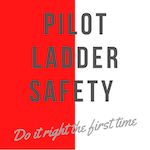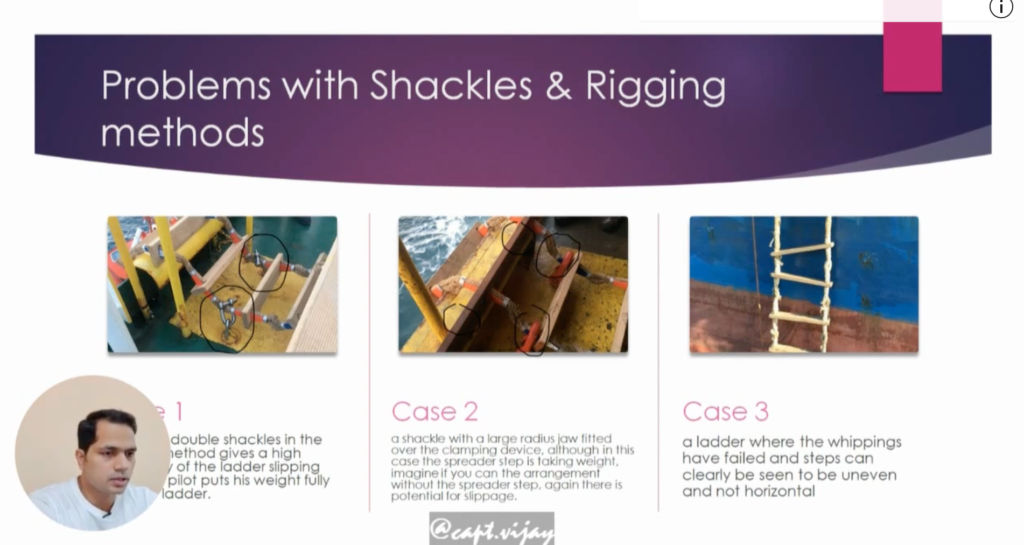Recently, Captain Karanjikar invited me to write an article for the AIMPA-magazine. It should cover pilot ladder safety legislation, from a “holistic” point of view. Since the start of the website pilotladdersafety.com spring 2020, I have been in contact with a lot of maritime pilots and professionals from all over the maritime industry. The question that has arisen from these discussions is “How can we change the safety of pilot ladders for the better, by going from Regulations and Guidelines to “Safety as a Total System”. One cannot get more holistic than that, when contemplating an answer to that question.
The results of the 2020 IMPA safety campaign have been reported and the results are not very good in a sense that little has changed. A quick analysis over the last five years shows that the involvement of maritime pilots is growing, however the number of noncompliant pilot ladders is not going down.
As we all know, the system of legislation covering pilot ladders consists of SOLAS Chapter V regulation 23, Guidelines on Pilot Transfer Arrangements: IMO A.1045(27), International Standards (ISO 799:2019) and Procedures (ISM). They form a chain which, in theory, should ensure pilot ladders are rigged, used, maintained and handled in a safe and professional manner. They form a chain, with interdependencies and references to each other. Anyone saying these guidelines, procedures and standards are not mandatory is maybe right in a legal sense, but very wrong from a safety point of view. They form an inseparable set of links in the present legal and safety framework that is in place.

The international character of the legislation implies that public and private bodies have a supervising role over different parts of pilot ladders regulations and standards. Classification societies, as part of their own business, or on behalf of flag states or port state control, are the most notable. Also, there is the national coast guard agency, and after an accident or incident has happened: the river, water- or harbour-police or health safety labour inspection.
When it comes to reporting schemes about pilot ladders, a lot of initiatives can be identified, also both in the public and private domain. It remains unclear what exactly is done with the data collected, other than a chapter in an annual report scheme. All are covering part of the worldwide, industrywide problem of non-compliant pilot ladders. The NGO organisations IMPA and EMPA are putting safety of pilot ladders in the spotlight for decades. In the meantime, maritime pilots have taken it upon themselves to launch initiatives on social media, like the very successful #dangerousladders Facebook group to identify non-compliant ladders. By showing the pictures of day-to-day bad practices, it becomes clear to the public that a perfect safety record in the field of pilot ladder still has a long way to go. The influence of these social media exposures cannot be underestimated: developments are underway to have the IMO “wheelhouse poster” changed and various shipping owners are increasingly changing their dangerous non-compliant Pilot Boarding Arrangements (PBA’s), in particular the deadly trapdoor arrangements.
In the meantime, both IMPA, EMPA and various pilot’s associations are pressing upon legislating bodies, shipping representatives’ associations and government bodies to increase their efforts on training of good practices, and enforcement of legislation.
To sum it up, a lot of initiatives are underway, all with the best of intentions. However, it seems like there is a lot of loose sand to it, without much result, without coordination and with important stakeholders in the process only partially involved or missing at all. The problems that arise with pilot ladders cannot only be reduced to legislation and regulations, or the failure to comply with procedures and guidelines. Many of these cases can be traced back to lack of training, bad seamanship, poor ship design or regulatory gaps.
When approaching pilot ladder safety as a total system, it is therefore necessary that all stakeholders involved in that total system are actually getting “involved” . The issue of pilot ladder unsafety is not only a matter of maritime pilots and ships crews, there is more to it than that. For instance: shipowners, ship designers, legislators, classification societies, relevant NGO’s and pilot ladder manufacturers should be part of this equal playing field as well.
Based on the idea that collaborative stakeholders achieve more than any one of them on their own, it is time to work on a new approach of pilot ladder safety. If we succeed in establishing the connection between all stakeholders involved in an international context, we may be able to achieve (innovative) solutions that will benefit the safety of pilot ladders and maritime pilots and the industry as a whole.

* E.g.: IMPA, EMPA IMCA, INTERTANKO, IHMA
The benefits of such a cooperation amongst stakeholders could be multiple, since there are many problems that need to be solved when addressing the pilot ladder safety issue. To name a few: How can pilot ladder accessibility be risk based designed in such a way that pilot ladders are safely used, secured and stowed properly? There is no legislation about securing ladders at intermediate length, can we fill that gap? There is no worldwide data available about pilot ladder incidents, how can that be resolved? Can training into the use pilot ladders be improved, both onboard and ashore?
Therefore, the output of such a process could be in the form of recommendations, guidelines or standards regarding Training, Ship Design, Technical issues should be embedded in a Quality Assurance and Quality Control total system. These should be practically based, and safety driven. In the process of continuous improvement, the results of the process should be analysed, evaluated and feedback should be given back to the stakeholders.
Much work needs to be done to achieve an industrywide initiative to improve pilot ladder safety. At the moment, there are several initiatives underway to quantify the problem of pilot ladder safety. With the outcome of various studies, it should be possible to get legislators and other relevant stakeholders interested in to join maritime pilots into finding solutions. That is a first goal. In the meantime, we must continue the work towards the goal of getting a zero-incident record on pilot ladder safety.
Herman Broers
This article appeared in AIMPA January 2021 issue.

